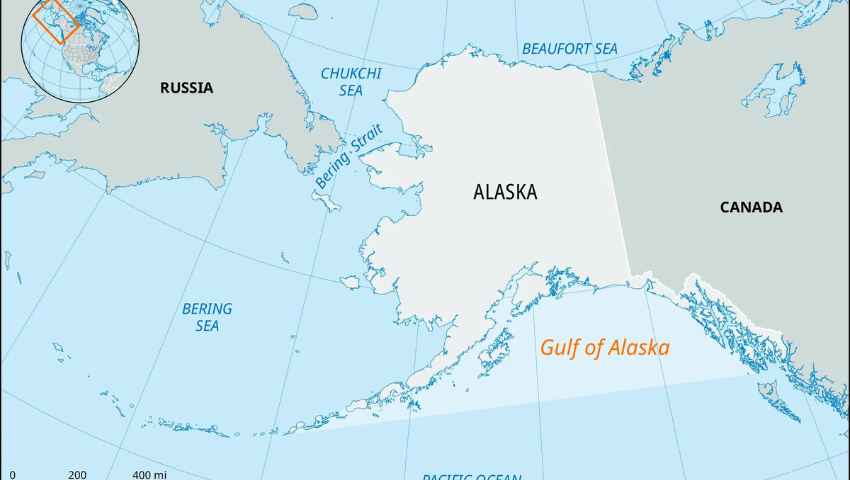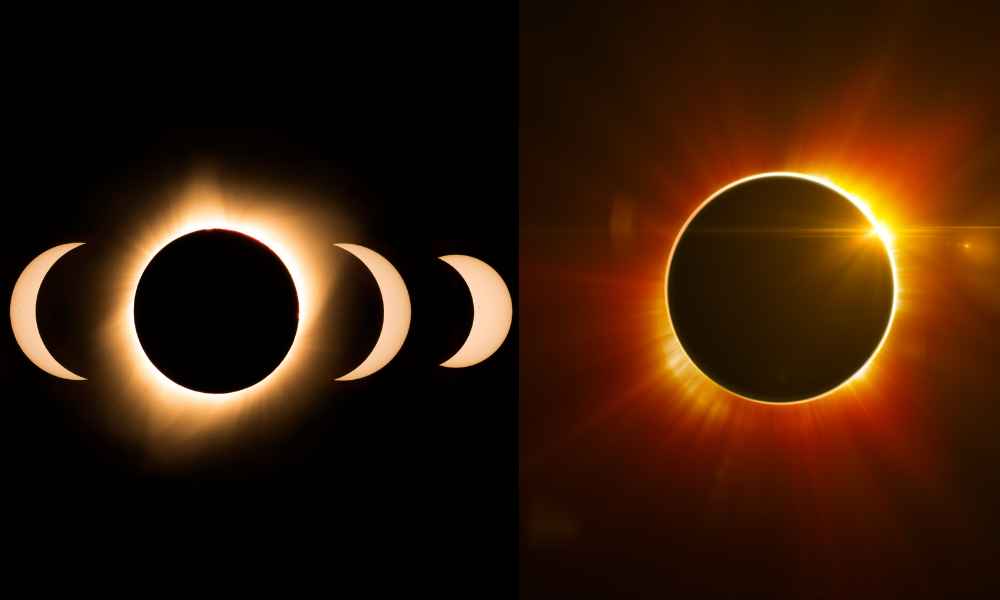The Gulf of Alaska is in the northeastern Pacific Ocean. It is off the southern coast of Alaska, between the Alaska Peninsula and the Alexander Archipelago in the USA. For many years, there has been a myth circulating on the internet that two oceans meet but never mix in the Gulf of Alaska. Is it true? Keep reading the article, and let’s find out the answer to the myth of the Gulf of Alaska.
Scientific Explanation Behind the Phenomenon
When two different water masses with different properties meet, they create a “color line” or “color boundary.” This phenomenon, where two distinct colors of water do not mix immediately, is a focus of study in oceanography. What causes this unusual phenomenon? Here’s the simple explanation.
This is not where two oceans meet. It is where glacial meltwater mixes with the seawater of the Gulf of Alaska. Glacial meltwater is light blue, and seawater is dark blue. The difference in temperature, water density, and salinity between the glacial meltwater and seawater prevents them from mixing.
The Phenomenon: Two Oceans Meeting
A viral image from social media, which recently resurfaced as a Facebook post, claims to show a place in the Gulf of Alaska where two oceans meet but do not mix. Earlier, on January 10, 2016, a Facebook post was published in this regard, and it was circulated on social media more than 4,000 times.
The photo, often called “the place where two oceans meet,” is frequently misunderstood. Many people, especially Reddit users, wrongly think it shows the Baltic and North Sea meeting. They believe the two types of water never mix and always stay separate, like a boundary on a map. However, the real explanation is simpler and different from these misconceptions.
You might also have seen another version of the photo taken by photographer Kent Smith during a cruise in the Alaska in July 2010. This photo has been shared online for years. Thanks to Smith’s explanation on his Flickr page, there are fewer misconceptions about it. By early 2013, this photo had over 860,000 views on one page alone and has been popular on Reddit and social media for years.
Geography and Significance of the Gulf of Alaska

The place is significant for oceanography research because of its unique features. The Gulf of Alaska, part of the Pacific Ocean, spans about 592,000 square kilometers (228,000 square miles). This area includes Glacier Bay National Park and the ‘Inside Passage’ in Southeast Alaska. It’s known for its stunning and rugged landscapes that attract many tourists around the world.
The Gulf of Alaska is vital for both the indigenous communities and industries like fishing and shipping. It is a critical ecosystem home to diverse marine species. Its unique environment supports abundant life, including whales, seals, sea lions, and more. The weather here can be rough, with strong winds, high seas, and frequent storms. The area also experiences intense seismic activity, including active underwater volcanoes.
Also, the Alaska Current’s cold, nutrient-rich waters appear brown or green because they contain suspended sediments, algae, and organic matter. These nutrients are vital for phytoplankton growth, which supports the entire marine food chain.
Protecting the Gulf of Alaska: Threats and Conservation
The Gulf of Alaska faces risks from environmental dangers like oil spills and climate change. These threats can severely harm the ecosystem and communities in the area. An oil spill could damage the local ecosystem, especially the fish, and thereby damage fisheries.
Also, Climate change is altering ocean temperatures and currents, which might affect the Gulf’s color line and ecosystem. The color line is crucial for commercial fishing in the area. Fishermen rely on the color line to find schools of fish, as these fish often gather near the boundary where two different ocean currents meet.
Standing at the edge of the Gulf of Alaska, observing where two oceans meet, reminds us of our duty to protect this natural wonder. It’s crucial to take action to ensure the Gulf of Alaska remains a thriving ecosystem where two oceans meet but remain distinct.
Conclusion
In conclusion, the Gulf of Alaska is a unique and vital ecosystem where glacial meltwater and seawater meet but don’t mix easily. This phenomenon, often misunderstood, highlights the region’s distinct environmental conditions. Protecting it from threats like oil spills and climate change is crucial for maintaining its biodiversity. Observing this natural wonder reminds us of our responsibility to preserve its beauty.
References
- Flickr, July 4, 2010, Merging Oceans
- Flickr, July 4, 2010, Merging Oceans-The Other Images
- Anchorage Daily News
- World Famous Things
- Britannica
FAQs
The Gulf of Alaska is known for its striking visual phenomenon, where glacial meltwater meets the Pacific Ocean without mixing, creating a distinct color boundary.
It is located in the United States, off the southern coast of Alaska.
It is a crucial habitat for diverse marine life, supports local communities and industries, and plays a significant role in marine research.
It was shaped by glacial and volcanic activity, as well as ocean currents and tectonic movements over millions of years.










